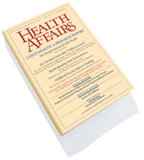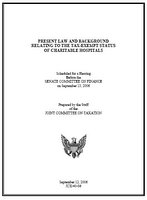
Two stories in the
New York Times today, both well worth reading. (And I don't have a stable link to take you to them; as soon as I find one, I will insert it here. Until then, the links I do have require a free registration.)
A widely followed national survey reported yesterday that the cost of employee health care coverage rose 7.7 percent this year, more than double the overall inflation rate and well ahead of the increase in the incomes of workers.
The 7.7 percent increase was the lowest since 1999. But the average cost to employees continued an upward trend, reaching $2,973 annually for family coverage out of a total cost of $11,481.
Since 2000, the cost of family coverage has risen 87 percent while consumer prices are up 18 percent and the pay of workers has increased 20 percent, the survey noted. That is without counting the cost of deductibles and other out-of-pocket payments, which have also been rising.
These spiraling costs — a phrase that has virtually become a prefix for the words “health care” — are slowly creating a crisis. Many executives have decided that they cannot afford to keep insuring their workers, and the portion of Americans without coverage has jumped 23 percent since 1987.
An industry that once defined the American economy, meanwhile, is sinking in large measure because of the cost of caring for its workers and retirees. For every vehicle that General Motors sells, fully $1,500 of the purchase price goes to pay for medical care. “We must all do more to cut costs,” G.M.’s chief executive, Rick Wagoner, said on Capitol Hill this summer while testifying about health care.
Mr. Wagoner’s argument has become the accepted wisdom about the crisis: the solution lies in restraining costs. Yet it’s wrong. Living in a society that spends a lot of money on medical care creates real problems, but it also has something in common with getting old. It’s better than the alternative.
To understand why, it helps to look back to a time when Americans didn’t worry much about health care costs. In 1950, the country spent less than $100 a year — or $500 in today’s dollars — on the average person’s medical care, compared with almost $6,000 now, notes David M. Cutler, an economist who wrote a wonderful little book in 2004 titled, “Your Money or Your Life.”
Most families in the 1950’s paid their medical bills with ease, but they also didn’t expect much in return. After a century of basic health improvements like indoor plumbing and penicillin, many experts thought that human beings were approaching the limits of longevity. “Modern medicine has little to offer for the prevention or treatment of chronic and degenerative diseases,” the biologist René Dubos wrote in the 1960’s.
But then doctors figured out that high blood pressure and high cholesterol caused heart attacks, and they developed new treatments. Oncologists learned how to attack leukemia, enabling most children who receive a diagnosis of it today to triumph over a disease that was almost inevitably fatal a half-century ago. In the last few years, orphan drugs that combat rare diseases and medical devices like the implantable defibrillator have extended lives. Human longevity still hasn’t hit the wall that was feared 50 years ago.
Instead, a baby born in the United States this year will live to age 78 on average, a decade longer than the average baby born in 1950. People who have already made it to their 40’s can now expect to reach age 80. These gains are probably bigger than the ones the British experienced in the entire millennium leading up to 1800. If you think about this as the return on the investments in medicine, the payoff has been fabulous: Would you prefer spending an extra $5,500 on health care every year — or losing 10 years off your lifespan?
Yet we often imagine that the costs and benefits are unrelated, that we can somehow have 2006 health care at 1950 (or even 1999) prices. We think of health care as if it were gasoline, a product whose price and quality have nothing to do with each other.
There is no question that the American medical system does suffer from a lot of waste, be it insurance industry bureaucracy or expensive procedures that haven’t been proven effective. But the No. 1 cause of the cost increases is still the one you can see at the hospital and in your medicine cabinet — defibrillators, chemotherapy, cholesterol drugs, neonatal care and other treatments that are both expensive and effective.
Not even most forms of preventive care, like keeping diabetes under control, usually save money, despite what many people think. The care itself has some costs, and, more important, patients then live longer than they otherwise would have and rack up medical bills. “When I make this point, people accuse me of wanting people to die earlier. But it’s exactly the opposite,” Dr. Jay Bhattacharya, a researcher at Stanford Medical School, told me. “If these expenditures are keeping people alive, it’s money well spent.”
There's more, and it's all worth reading.
















